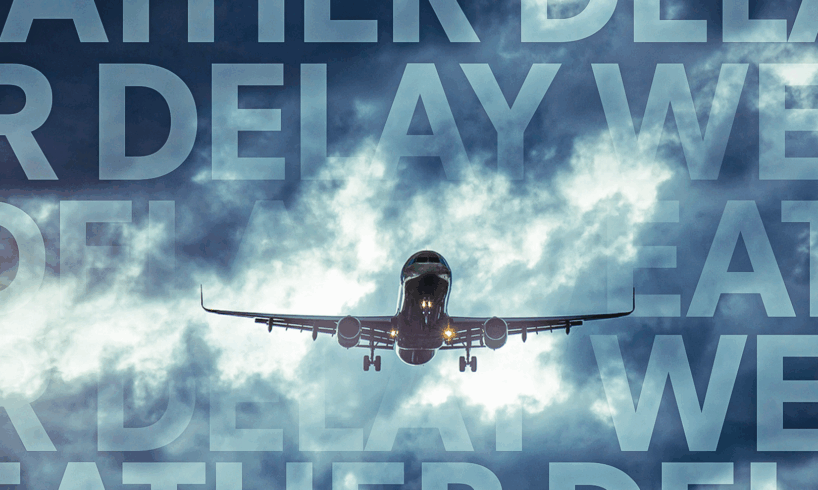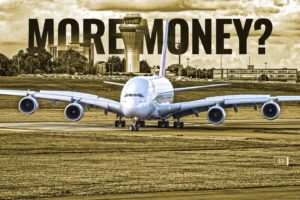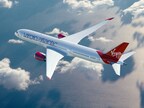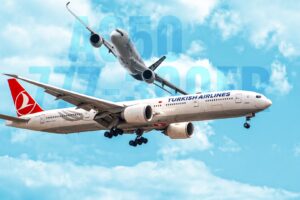
According to the Federal Aviation Administration
(FAA), weather remains the single largest cause of delays nationwide, responsible for 371,534 late arrivals in the latest 12-month record. Thunderstorms deliver the most disruptions, while fog and low cloud ceilings rank second. Summer thunderstorm peaks coincide with the highest passenger volumes, whereas winter snowstorms impose costly de-icing queues and runway closures.
Newark Liberty International Airport
IATA/ICAO Code
EWR/KEWR
CEO
James Gill
Terminals
Terminal A |
Terminal B |
Terminal C
Airlines for America estimated a $33 billion hit to the US economy in 2019 from weather-induced holdups. NextGen Weather is a program using combined resources from the FAA, National Oceanic and Atmospheric Administration, and NASA. The FAA hopes it will cut national weather delays by one-third once operational. Now, without further ado, let’s review the five most weather-stricken aerodromes in the US.
6
Newark Liberty International Airport (EWR)
62.85 % Delay Rate
Weather Factors
2024 Delays
Snow, low clouds/fog, wind, thunderstorms
190,539
Just days ago, Newark made the news with its epic weather-related delays that snowballed into an operational fiasco affecting hundreds of flights, with over 160 canceled and 400 delayed. National Public Radio reported that Senate Leader Chuck Schumer of New York was demanding:
“A full Inspector General investigation into what happened at Newark, so these problems don’t get worse, or spread to airports across the nation.”
On otherwise clear afternoons, air traffic controllers often have to hold arrivals over Pennsylvania until gusts drop below cross-wind limits. That’s thanks to the unfortunate mismatch of EWR’s runway orientation with the prevailing winds, which generates the lion’s share of disruptions.
Snowstorms still paralyze the field during winter as Newark Liberty International Airport
is bombarded by the same harsh conditions that afflict New York’s LaGuardia. De-icing queues jam ground ops and plow teams between rotating closures across each runway. Low ceilings erode capacity with equally frustrating effects during frequent cloudy and foggy days.
United Airlines
is the prevailing service provider at EWR with a dominating share of airport traffic. A myriad of domestic and international airlines also serve the airport, but none have more than a minor presence by comparison. Flights across the US and overseas are extremely popular at Newark, with nearly 50 million flyers passing through the EWR terminals in recent years.
The FAA estimates the combined disruptions at LGA and EWR created 2.9 million passenger-delay hours in 2024. United has asked authorities to seek a remedy to the situation, and Port Authority engineers have studied a future runway that will mitigate cross-wind impacts. Completion, however, is projected to be around 2035, meaning Newark will likely stay the most weather-delayed field in America for years to come.
5
San Francisco International Airport (SFO)
55.37 % Delay Rate
Weather Factors
2024 Delays
Low clouds/fog, wind
228,255
San Francisco International Airport
’s high delay rate may puzzle at first because it seldom snows and logs fewer summer thunderstorms than even Midwest hubs. Looking past the surface layer, the culprit can be found to be persistent coastal fog. As the nearly daily marine layer condenses overnight when cool Pacific air meets Central Valley warmth, ceilings often drop below 2,000 ft and restrict runways.
When the tower restricts parallel approaches, arrival rates fall below ideal traffic flow. Planes end up holding over Modesto or the Pacific, burning fuel and nibbling away at schedule margins. Cross-wind can also compound the strain. Afternoon sea breezes gust to compel operators to accept weight-restricted departures or excessive delays. As aircraft hold on the ground to wait out the bad conditions, block times grow, and patience wears thin.
Despite the jet fuel wasted in vain, morning backlogs strike again as they snowball (metaphorically) and delay later operations as well. Until the runways can be widened to alleviate the situation, SFO remains the one West Coast hub with delay percentages worse than most snow-belt airports.
Just last month, the weather forecasting office at SFO was reportedly experiencing a critical staff shortage with no apparent resolution in sight, according to the San Francisco Chronicle. We can only hope that the crisis will be resolved quickly to keep SFO running at full capacity.
4
New York LaGuardia Airport (LGA)
54.71 % Delay Rate
Weather Factors
2024 Delays
Snow, low clouds/fog, wind, thunderstorms
152,563
Photo: Port Authority of New York and New Jersey
LaGuardia Airport
serves a smaller portion of New York City’s air travelers than New York JFK Airport
, but that doesn’t mean it’s not just as busy. The physical size of LaGuardia is several times smaller than JFK, yet recent annual traffic has topped 30 million flyers passing through LGA’s terminals. Unfortunately, not every day is smooth sailing, as LGA is susceptible to both winter and summer weather delays.
Snowstorms are the prime flight disruptor. As the nor’easters hit with heavy showers of snowflakes and freezing rain, the runways demand repeat plow passes and de-icing runs. De-icing trucks park nose-to-tail when space is limited, as ground times grow and delays stack up when storms strike during peak hours.
Flood risk exists during the heavy rain seasons of spring and summer. Superstorm Sandy sent a tidal surge across Runway 13 in October 2012. In September 2023, a cloudburst forced a partial closure for several hours.
Cross-wind adds a headache due to crisscrossing runways. The waterfront airstrips are vulnerable to high winds, strong gusts, and other annoying nautical weather patterns. Jets often circle over Long Island Sound while awaiting wind shifts that allow for a safe approach.
Despite the frequent inconveniences, LGA was awarded the Airport Service Quality Award last year for the fourth-best airport in North America, in the 25 to 40 million passenger category. Port Authority Executive Director Rick Cotton said:
“A decade ago, the suggestion that LaGuardia Airport would one day be recognized on the world stage as the best regional airport in North America would have been laughable. But the Port Authority and our private partners have built what we promised – a world-class airport, with inspiring architecture, public art, iconic concessions and state-of-the-art technology that has propelled LaGuardia from worst to best in the nation in the eyes of the critics and passengers alike.”
Related
Expect Weather Delays: These Are The World’s Most Lightning-Prone Airports
Airports in Southeast Asia feature heavily among the worst for lightning events.
3
Chicago O’Hare International Airport (ORD)
45.91 % Delay Rate
Weather Factors
2024 Delays
Snow, low clouds/fog, wind, thunderstorms
261,587
Photo: Chicago O’Hare International Airport (ORD)
According to the statistics on Weather.com, Chicago O’Hare International Airport
is the third most delayed airport in America due to weather conditions. Despite the percentage of flights being a bit better than the worst entries on our list, ORD has the highest raw number of delayed flights in total. Thanks to the staggeringly high volume of traffic, ORD is saved from being ranked worst overall.
Winter presents the crux of the issue, as brutal snow and ice derail operations with diversions, runway shutdowns, and operational pauses. Summer is hardly kinder. On average, the Windy City experiences 28 days of snowfall per year, while O’Hare has more thunderstorms than any other large airport in the Northeast, with roughly 38 days annually.
Cross-wind also meddles with travel plans. The Windy City doesn’t have the most extreme gusts, but enough to compound its other weather issues even more. Though less frequent, foggy days inflict their share of disarray when they strike amidst peak holiday volume.
United Airlines
is the most dominant carrier based at ORD, while American Airlines
brings up a distant second. There are many other domestic and international airlines with service to ORD, but none have a presence nearly as strong as United.
Chicago is not only a major destination unto itself, but one of the most valuable hubs in the nation for transfers and connecting flights to other destinations. As travelers make their way home for the holidays, many run the gauntlet of ORD’s winter weather and, unfortunately, often find themselves bested by Mother Nature’s fury.
2
Related
Air Canada Cancels 1290 Flights In 6 Days Due To Severe Weather & Crash In Toronto
However, Air Canada’s operations should gradually normalize going forward.
1
Boston Logan International Airport (BOS)
44.92 % Delay Rate
Weather Factors
2024 Delays
Snow, fog, wind
125,851
Snow is the recurring challenge of Boston’s biggest airport. Historical weather data shows an average of around 50% chance of at least one day of ten-inch snowfall each winter. De-icing equipment abounds, and ground crews do their best to keep the jets ready to fly, but Mother Nature is a formidable opponent.
Fog is another punishing schedule saboteur. As the marine layer in the seaside city brings ceilings below 600 ft, operations are reduced due to the relatively close parallel runways. Wind can add another constraint. Strong gusts from weather systems moving from sea to land can force diversions or more operational restrictions.
JetBlue
and Delta Air Lines
make up the dominant carriers at Boston Logan International Airport
but American Airlines is not far behind in the third spot. As the primary hub of one of the largest cities on the Eastern Seaboard, BOS has welcomed over 40 million travelers through its doors in recent years. That number continues to grow yearly as both domestic and international routes have picked up.
Among the most popular domestic routes are Chicago O’Hare (ORD) and Hartsfield-Jackson Atlanta International Airport
(ATL); meanwhile, the top international destinations are London, UK, and Paris, France, followed by Dublin, Ireland. Owing to the massive size of the city, the demographics of flyers are quite varied, with large numbers of both business and recreational travelers contending with the uncooperative weather along their way.





